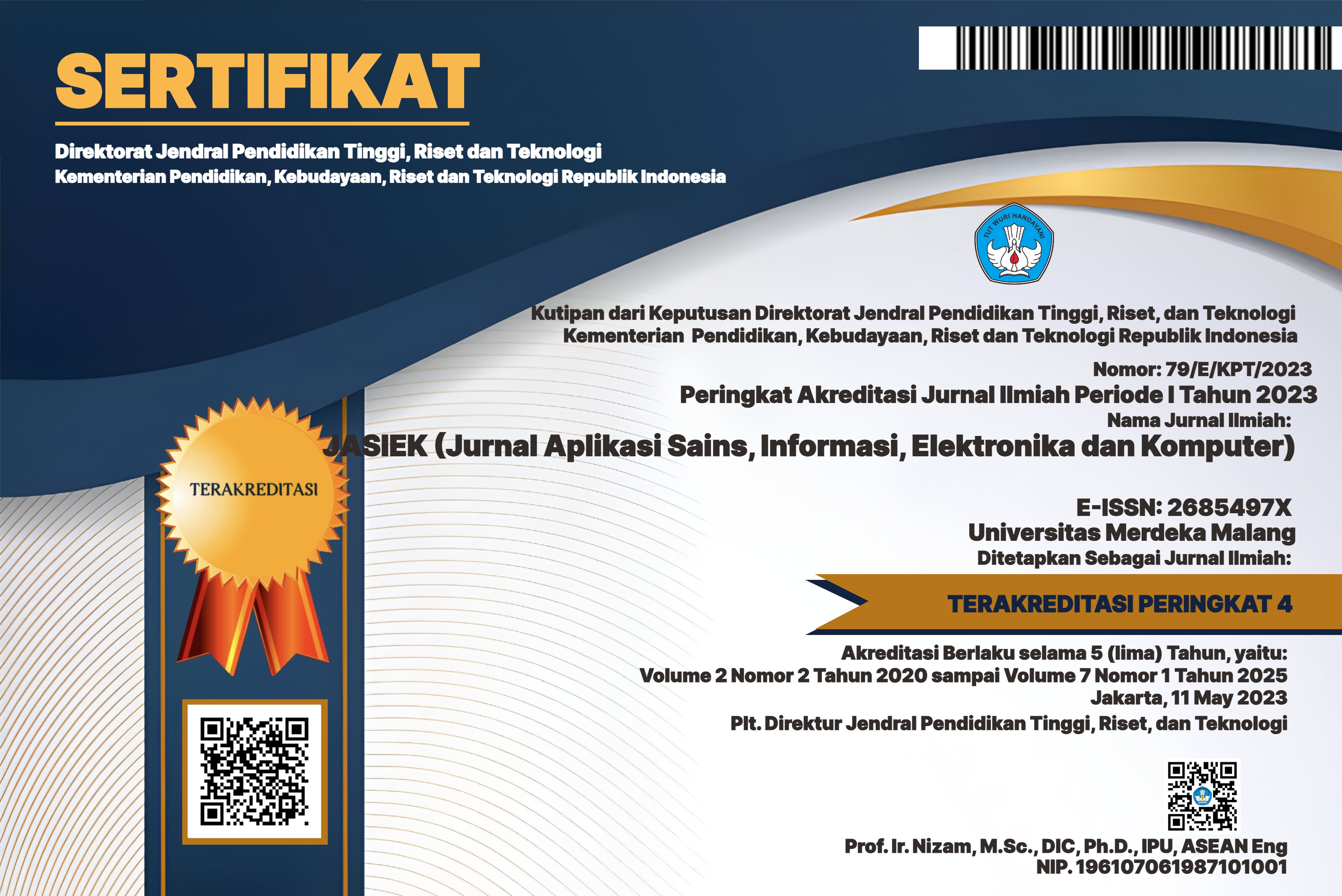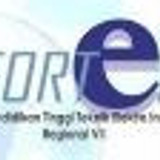IMPLEMENTASI SYSTEM CONTROL PID PADA KENDARAN SKUTER LISTRIK DUA RODA SEJAJAR
DOI:
https://doi.org/10.26905/jasiek.v1i1.3161Abstract
System control Proportional Integral Differensial (PID) merupakan metode control yang sering kali digunakan dalam system control industri. Kelebihan system control ini adalah memiliki struktur yang sederhana serta fleksibel dalam pengalikasiannya. Aplikasi dalam penelitian ini adalah menerapkan system control PID pada skuter listrik roda duan sejajar. Variable input yang digunakan berasal dari sensor Accelerometer, Gyroscope dan potensio meter. Actuator menggunakan 2 motor dc. Didapatkan hasil dari penelitian adalah keseimbangan skuter pada saat dikendarai.
Â
Downloads
References
G. Papafotiou, J. Kley, K. G. Papadopoulos, P. Bohren, and M. Morari, “Model predictive direct torque control - Part II: implementation and experimental evaluation,†IEEE Trans. Ind. Electron., 2009.
L. Petru and G. Mazen, “PWM control of a DC motor used to drive a conveyor belt,†in Procedia Engineering, 2015.
F. Q. Qi, X. D. Jing, and S. Q. Zhao, “Design of stepping motor control system based on AT89C51 microcontroller,†in Procedia Engineering, 2011.
Mujahidin, I., Pramono, S. H., & Muslim, A. (2018, October). 5.5 Ghz Directional Antenna with 90 Degree Phase Difference Output. In 2018 Electrical Power, Electronics, Communications, Controls and Informatics Seminar (EECCIS) (pp. 224-228). IEEE.
X. M. Dong, W. Guan, and X. F. Meng, “Implication of Dynamic Unbalance to the Inertial Accelerometer Calibration with Vibrafuge,†in Procedia Engineering, 2015.
R. Kennedy, “Looking Back to Move Forward: The Dymaxion Revisited,†Procedia Technol., 2015.
M. Zhanbyrtayev and B. Kassenov, “A novel approach to mobile indoor navigation systems,†2016.
I. Mujahidin, R. Yuwono, and A. Mustofa, “Rancang Bangun Rectifier Antenna Mikrostrip Ufo Pada Frekuensi Ultra Wideband (UWB) Sebagai Pemanen Energi Elektromagnetik,†J. Mhs. TEUB, vol. 3, no. 2, 2015.
G. W. M. Whyte, “Antennas for Wireless Sensor Network Applications by,†Antenna, 2008.
J. A. de L. Perini et al., “Optimisation of the removal conditions for heavy metals from water: A comparison between steel furnace slag and CeO2nanoparticles,†Arab. J. Chem., 2017.
R. Yuwono, I. Mujahidin, A. Mustofa, and Aisah, “Rectifier using UFO microstrip antenna as electromagnetic energy harvester,†Adv. Sci. Lett., 2015.
S. M. Sultan, Y. A. M. Hassan, and A. M. Abulkibash, “Chemiluminescence assay of promethazine hydrochloride using acidic permanganate employing flow injection mode operated with syringe and peristaltic pumps,†Talanta, 2003.
M. Octavian, Ari; Darmawan, Hofman; Nurohmah, Hidayatul; Ali, “Optimasi Dual Axis Tracking Untuk Photovoltaic Berbasis Firefly Algorithm dan Ant Colony Optimization,†SinarFe7, 2018.
F. Greg Shinskey, “PID control,†in Measurement, Instrumentation, and Sensors Handbook: Spatial, Mechanical, Thermal, and Radiation Measurement, Second Edition, 2017.
C. F. Schaefer et al., “PID: The pathway interaction database,†Nucleic Acids Res., 2009.
Downloads
Published
Issue
Section
License
Authors who publish with this journal agree to the following terms:
The journal allow the authors to hold the copyright without restrictions and allow the authors to retain publishing rights without restrictions.
Authors retain copyright and grant the journal right of first publication with the work simultaneously licensed under a Creative Commons Attribution-ShareAlike 4.0 International License that allows others to share the work with an acknowledgement of the work's authorship and initial publication in this journal.
Authors are able to enter into separate, additional contractual arrangements for the non-exclusive distribution of the journal's published version of the work (e.g., post it to an institutional repository or publish it in a book), with an acknowledgement of its initial publication in this journal.
Authors are permitted and encouraged to post their work online (e.g., in institutional repositories or on their website) prior to and during the submission process, as it can lead to productive exchanges, as well as earlier and greater citation of published work (See The Effect of Open Access).

This work is licensed under a Creative Commons Attribution-ShareAlike 4.0 International License.










